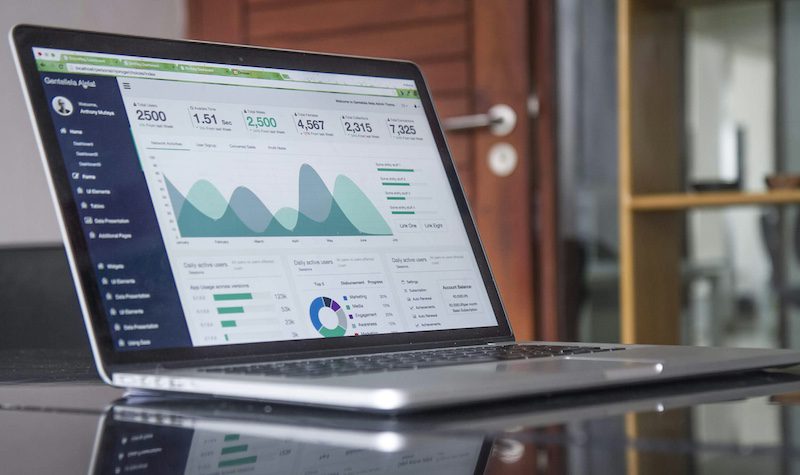Connector Industry Forecast for 2024
A year ago, pandemic-era supply chain disruptions and uneven demand continued to weigh on the connector industry. As we enter 2024, these factors have improved but new technology trends and other uncertainties are altering the landscape. Here’s what to expect in the months to come.

As we enter the new year, the connector industry faces a range of challenges and opportunities. Global conflicts are stressing supply chains in terms of access to materials and open shipping lanes. Labor shortages continue to impact manufacturing, especially in North America and Europe. However, demand across many markets is strong. The implementation of 5G and sustainable energy infrastructure is creating new opportunities. Investments in chip manufacturing will soon bring new facilities online. And the continuous development of new technologies is driving innovation in interconnects — and in turn, those new interconnects are enabling greater achievements in electronic design.
Five trends impacting interconnects in 2024
SWaP (Size, Weight, and Power) remains a top priority in interconnect design and specification for every industry. Component designers have achieved stunning reductions in size matched by leaps in performance for high-speed interconnects driving product design. The rise of portable, connected devices is reinventing every product category and changing the way we live. And it’s not just small devices; large products such as cars, spacecraft, and aircraft benefit from this miniaturization trend as well, with smaller lighter components reducing payload and enabling us to go further, faster.
Customization has come a long way. While the lengthy timeline and high costs of custom components helped launch a thousand standards and excellent versatile COTS components, new processes, including digital modeling, 3D printing, and rapid prototyping, allow designers to access the perfect, unique part for their designs quickly and affordably.
Advanced packaging is allowing designers to push the limits of Moore’s Law, replacing traditional integrated circuit design with new strategies that integrate chips, electrical, and mechanical components in a single packaged device. Multichip modules, system in package (SIP), 3D ICs, and other creative packaging designs are enabling great performance gains.
New materials for new products are progressing rapidly. Materials science is addressing market-specific needs and industry-wide challenges, including weight reduction, ruggedization, and durability; biocompatibility and sterilization requirements; and the need for safer products for the environment and human health.
Artificial Intelligence will play a role in component design. AI technologies made a splash in 2023 with the arrival of generative AI models. In 2024, this technology will be applied to component design to optimize performance, increase efficiency, test systems and designs, and explore new forms. At the same time, the extreme need for high-speed performance required to facilitate these functions will put more pressure on the connector industry to create more powerful new products.
A mixed forecast for 2024
Forecasting is always difficult, especially during times of financial and geopolitical uncertainty. Projecting future business conditions in this environment is almost impossible. Post-pandemic economic markets are still unstable; world GDPs are slowing in all economies; and labor shortages continue. Although global supply chain issues have improved drastically, with ocean and truck freight capacities improving, we still are faced with several obstacles driven by issues such as labor shortages and global conflicts. Even so, the 2023 global economy appears to have fared better than most economists had expected, leading to a stronger 2024. Bishop & Associates anticipates positive connector growth in 2024. Growth in the mid-to-low single digits is the historical norm for the connector industry, with demand historically rebounding after a down year.
Bishop & Associate’s January 2024 Confidence Index survey of the connector industry reveals a neutral rating of 50.0, up from last quarter at 42.1, for North America and Europe. (Companies in Asia report a more pessimistic outlook.) Global connector sales in 2023 were largely flat, although a burst of activity at the end of the year may point to improving conditions in 2024. November 2023 bookings were up 8.5%, with a book-to-bill ratio in November of 1.00, a YTD of 0.98, and an industry backlog of 13.4 weeks. The market leading this increase is Transportation, with a 17.2% year-over-year growth; Automotive followed with 14.6% and Industrial with 8.5%. YOY orders increased in four of the six regions with China growing at the fastest rate. Even so, all regions have continued to exhibit negative YTD results.
 Bishop’s Connector Industry Forecast 2023-2028 report undertakes a deep examination of the connector industry’s performance, reaching back into the full pandemic recovery period, with a full reporting for 2022, a preliminary evaluation of 2023, and a detailed forecast for the years 2024 through 2028. Much can be learned about the electronics industry by looking at connector sales by market, region, and product type.
Bishop’s Connector Industry Forecast 2023-2028 report undertakes a deep examination of the connector industry’s performance, reaching back into the full pandemic recovery period, with a full reporting for 2022, a preliminary evaluation of 2023, and a detailed forecast for the years 2024 through 2028. Much can be learned about the electronics industry by looking at connector sales by market, region, and product type.
Some observations:
- Europe was ranked fourth out of six regions for percentage growth in 2022 but is ranked number one in 2023 with forecasted low single-digit growth of 2.5%.
- Electronic connector sales vary remarkably by market sector. In 2022, the telecom/datacom market saw the greatest percentage growth, at 9.4%, driven by the increase in internet activity and the continuing drive towards 5G. In 2023, although nowhere near the growth in 2022, the telecom/datacom market will once again show the greatest growth, expanding by 0.8%.
- In 2023, the telecom/datacom market will be followed by the military/aerospace market, with growth of 0.6%. It has not been since 2019, that the military/aerospace market out preformed key markets like automotive and industrial, but unfortunately worldwide turmoil has put military/aerospace expenditures in the spotlight.
- In 2013, North America and Europe represented 42.7% of total sales, while the Asian markets (Japan, China, and Asia Pacific) represented 51.7% of world connector sales. In 2023F, North America and Europe are anticipated to represent 45% of world connector sales, an increase of 2.3 percentage points from 2013, while the Asian market is anticipated to represent 50.1%, a decrease of 1.6 percentage points.
What the new year will bring remains to be seen. But electronics will continue to be one of the most important forces driving our world and interconnects will be critical to the technologies that are only beginning to unfold.
To learn more, visit Bishop & Associates and see the Bishop’s Connector Industry Forecast 2023-2028 report.
Like this article? Check out our other How to Specify, Mil/Aero Market articles, and our 2022 and Article Archives.
Subscribe to our weekly e-newsletters, follow us on LinkedIn, Twitter, and Facebook, and check out our eBook archives for more applicable, expert-informed connectivity content.
- State of the Industry: 2022-2023 Connector Sales - April 16, 2024
- Amphenol is On a Roll - April 2, 2024
- Nicomatic Proves That Two Heads are Better Than One - March 26, 2024





